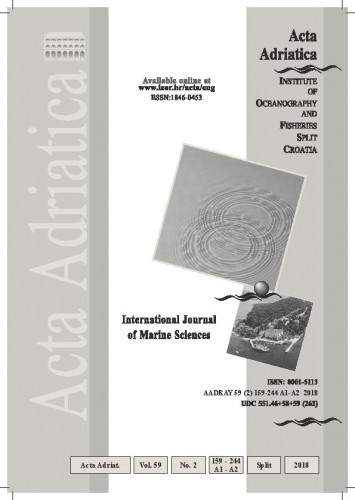Environmental contamination includes a mixture of organic substances that can have detrimental effects on marine organisms and should be evaluated in the quality and risk assessment of investigated marine areas. Marine areas selected for this study are a protected area, a mariculture area, a shipyard and an industrial area. Based on the toxicity of the organic seawater extracts these areas were classified as an undisturbed reference area (S1), an area with the low anthropogenic impact (S2), a potentially endangered area (S3) and an area with high anthropogenic impact (S4) respectively. The organic mixtures present in seawater samples collected at the above defined areas were tested for the induction of DNA damage and cell cycle alterations in the mussel Mytilus galloprovincialis hemocytes. Flow cytometric analyses were performed to detect changes in hemocytes DNA content distribution throughout the cell cycle. Organic seawater extracts from sampling sites S2, S3 and S4 induced an increase in the coefficient of variation of the G0/G1 peak and an increase in the number of cells in the G2/M phase reflecting the extent of DNA damage and G2/M arrest, respectively. The G2/M arrest in mussel hemocytes was concentration-dependent upon injection with organic seawater extracts from the S3 site and time dependant for S2, S3 and S4 sampling sites. The time dependence of the induction of the G/M arrest showed a characteristic pattern for each site due to the different quantitative and qualitative composition of the organic seawater extracts. The G2/M arrest was reversible 24 or 72 hours after treatment with organic seawater extracts from S2 or S3, and S4 sites, respectively. This reversibility was time- and site-specific indicating that such DNA damage is repairable to a certain degree according to the organic seawater extract composition.; Onečišćenje okoliša čini mješavina organskih tvari s mogućim učincima na morske organizme koje je potrebno procijeniti u sklopu istraživanja vezanih za utvrđivanje kvalitete okolišnog rizika za određeno morsko područje.Morska područja odabrana za svrhu ove studije uključuju zaštićeno morsko područje, područje marikulture, brodogradilište i industrijsko područje. Na temelju profila toksičnosti organskih ekstrakata uzoraka morske vode, navedena su područja razvrstana na nedirnuto morsko područje (S1), područje niskog antropogenog utjecaja (S2), potencijalno ugroženo područje (S3), odnosno područje visokog antropogenog utjecaja (S4). Mješavine organskih tvari prisutne u uzorcima morske vode prikupljenim na utvrđenim područjima testirane su na sposobnost indukcije oštećenja DNA te učinak na stanični ciklus hemocita dagnje Mytilus galloprovincialis. Kako bi se utvrdile promjene u distribuciji sadržaja DNA tijekom staničnog ciklusa hemocite su analizirane protočnom citometrijom. Organski ekstrakti morske vode sa S2, S3 i S4 inducirali su povećanje koeficijenta varijacije G0/G1 maksimuma kao i porast u broju stanica u G2/M fazi, odražavajući zaustavljanje ciklusa tj. “G2/M arrest” uslijed oštećenja DNA. Povećanje u količini oštećenja DNA bilo je popraćeno porastom broja hemocita G2/M fazi. Zaustavljanje staničnog ciklusa u G2/M fazi u hemocitima dagnje pokazalo se ovisnim o primijenjenoj dozi organskog ekstrakta morske vode sa mjesta uzorkovanja S3, a ovisnim o vremenu djelovanja ekstakta morske vode sa mjesta S2, S3 i S4. Utvrđena ovisnost o trajanju induciranog zaustavljanje ciklusa u G2/M fazi pokazala se karakterističnom za pojedina mjesta uzorkovanja što je posljedica različitih kvantitativnih i kvalitativnih karakteristika samog sastava pojedinih organskih ekstrakata morske vode.
Sažetak

 Acta Adriatica : 59,2(2018) / glavni urednik Jakov Dulčić.
Acta Adriatica : 59,2(2018) / glavni urednik Jakov Dulčić.